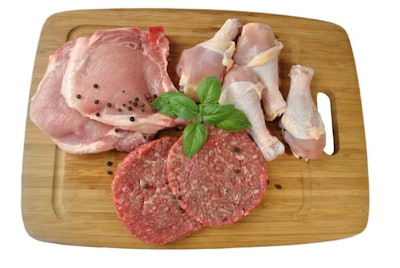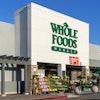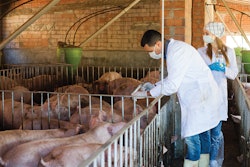
Analysts also predict growth for poultry production, but drop in pork production
2020 has been a difficult year for the beef and cattle industries, but U.S. beef production is still expected to grow this year and next, according to Don Close, senior animal protein analyst at Rabo AgriFinance.
Close spoke recently during the American Feed Industry Association’s (AFIA) Digital Dialogues Webinar Series.
“This has been the most dynamic year and ground-shifting changes in global meat trade that I recall in my career,” he said. “The fallout from this one is going to last a long, long time.”
Nonetheless, he expects U.S. beef production to increase by 1% in 2020, but not without challenges.
“If we are in fact going to see a 1% increase in production, we’re really going to have to hustle for the remainder of the year,” he said.
The backlog of 1 million fed cattle that was created early in the COVID-19 pandemic by processing plant disruptions has mostly been worked out, but Close said he thinks “we have the lion’s share of a million head of cattle outside for feed yards to work through,” and will therefore continue to see very large placements through at least the first quarter of 2021. He added that average carcass weights are up 26 pounds from a year ago.
For 2021, beef production is expected to increase 1.5%, with a lot of that increase in the first half, Close said.
“By the time we get to the second half of the year, we’ve worked through that backlog of feeder cattle and cattle outside of feed yards,” he said. “The tighter available supplies from the increased cow slaughter in both 2019 and ’20 will reduce the availability of cattle going on feed, and we could see a stronger market through the second half of 2021.”
Close also said he believes cow liquidation will continue in 2021.
“That level of cow liquidation is going to be leveraged heavily on the expansion of the drought and how many cows end up in forced liquidation, but because of that our expectations for the coming year are we’re looking for U.S. beef production to be up between 1 and 1.5%.”
Global trade outlook
On the global scale, Close said China and Europe bring good opportunities for U.S. beef exports. In China, this is due to challenges posed in the pork markets by African swine fever; in Europe it’s due to the trade implications once Brexit is implemented.
“A huge bright spot for the future of global beef trade is increased imports and consumption of beef in China,” he said. “The one big game changer that I think is occurring in global protein trade today is the developments in Europe. … Where (Brexit) will leave Great Britain and their need for alliances for security purposes but for economic purposes, I think the window of opportunity to see an increased relationship between the United States and Great Britain is actually pretty good.”
Kevin Good, vice president, industry relations for CattleFax, who also spoke during AFIA’s Digital Dialogues Webinar Series, added that pork exports, especially to China, have been “extremely good.”
But, he added, good animal health is key to keeping these export markets.
“Animal health is extremely important as far as trade and some of those barriers and some of those things that we have to comply with to gain access and keep access on a global market,” he said.
The U.S. pork industry saw many of the same processing plant challenges as the beef industry in April and May, but it is catching up now. However, pork producers haven’t seen much profitability this year, and next year’s pork production is expected to be down about 2%, Good said.
Broiler market expectations
In the broiler market, Good said feed prices are up and chicken prices are depressed, making for a low ratio of chicken price to feed.
“The last time it was this low – for a couple months back in 2018 – you actually had the broiler industry put the brakes on expansion. They slowed down their chick placement and their egg sets,” he said.
For 2021, poultry production is expected to increase 1.5%, Good said.












